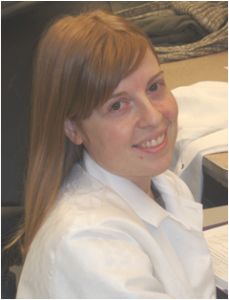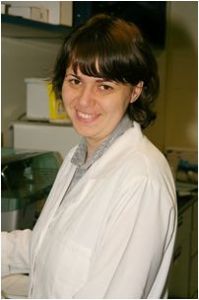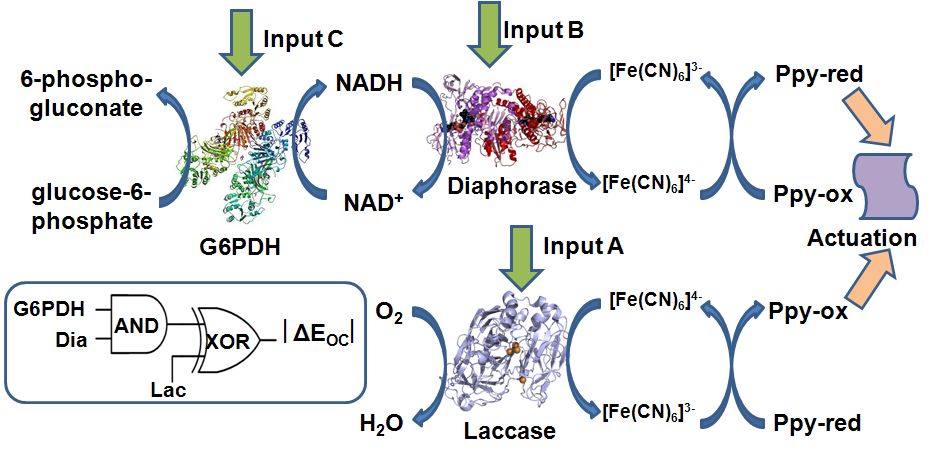
Biocatalytic reactions controlling the chemical actuator. Inset: Equivalent logic circuit corresponding to the input-processing biocatalytic cascade.
Artificial Muscle Reversibly Controlled by
Enzyme Reactions
Chemically induced actuation of a
polypyrrole (Ppy) artificial muscle was controlled by biocatalytic
reactions resulting in the changes of the redox state of the polymer
film mediated by soluble redox species. The biocatalytic process
triggered by diaphorase in the presence of NADH resulting in the
reduction of the Ppy film was reflected by the potential shift in the
negative direction generated in the film. Conversely, the biocatalytic
process driven by laccase in the presence of O2 resulted in
the oxidation of the Ppy film, thus yielding the positive potential
shift. Both reactions produced opposite bending of the Ppy flexible
strip allowing reversible actuation controlled by the biocatalytic
processes. The biocatalytic reactions governing the chemical actuator
can be extended to multi-step cascades processing various patterns of
biochemical signals and mimicking logic networks. The present chemical
actuator exemplifies the first mechano-chemical device controlled by
biochemical means with the possibility to scale up the complexity of
the biochemical signal–processing system.
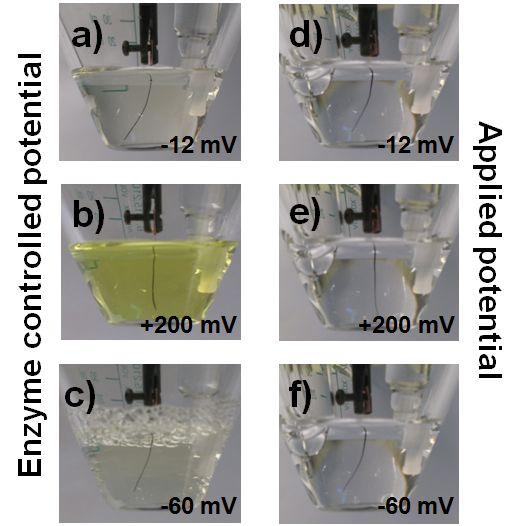 Images of the Ppy-functionalized strip
upon application of various biochemical signals: (A) Initial state of
the strip before the signal application in the presence of 10 mM K4[Fe(CN)6]
(note the initial reduced state of the redox mediator); (B) After the
application of laccase (Input A; 0.25 mg mL-1); (C) After
application of diaphorase (Input B; 0.25 mg mL-1). The
reacting solution also included 12 mM NADH and O2 (in
equilibrium with air) in 0.5 M NaClO4 aqueous solution, pH
6.0. Images of the Ppy-functionalized strip upon application of
external electrical potentials: (D) -12 mV; (E) +200 mV; (F) -60 mV.
The solution included only 0.5 M NaClO4. The digital images
and the open circuit potential were obtained 180 s after the signal
application.
Images of the Ppy-functionalized strip
upon application of various biochemical signals: (A) Initial state of
the strip before the signal application in the presence of 10 mM K4[Fe(CN)6]
(note the initial reduced state of the redox mediator); (B) After the
application of laccase (Input A; 0.25 mg mL-1); (C) After
application of diaphorase (Input B; 0.25 mg mL-1). The
reacting solution also included 12 mM NADH and O2 (in
equilibrium with air) in 0.5 M NaClO4 aqueous solution, pH
6.0. Images of the Ppy-functionalized strip upon application of
external electrical potentials: (D) -12 mV; (E) +200 mV; (F) -60 mV.
The solution included only 0.5 M NaClO4. The digital images
and the open circuit potential were obtained 180 s after the signal
application.See also movie showing bending of the modified strip upon electrochemical signals.
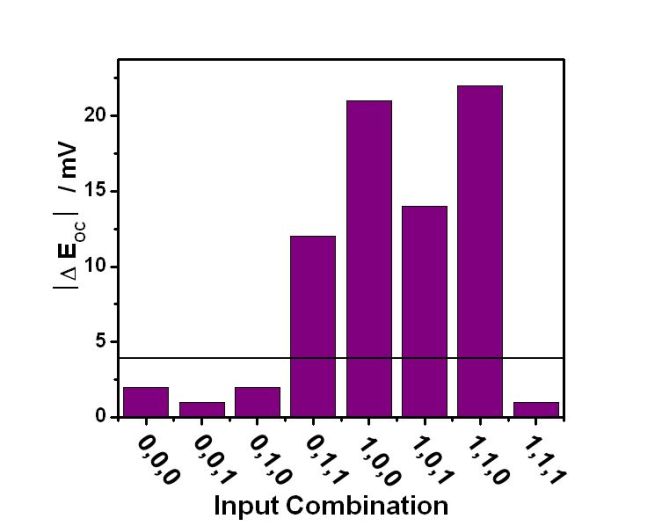
The bar chart showing the open circuit
potential changes generated
on the Ppy-strip upon different combinations of the enzyme-input
signals (A,B,C) corresponding to the three-enzyme biocatalytic system.
